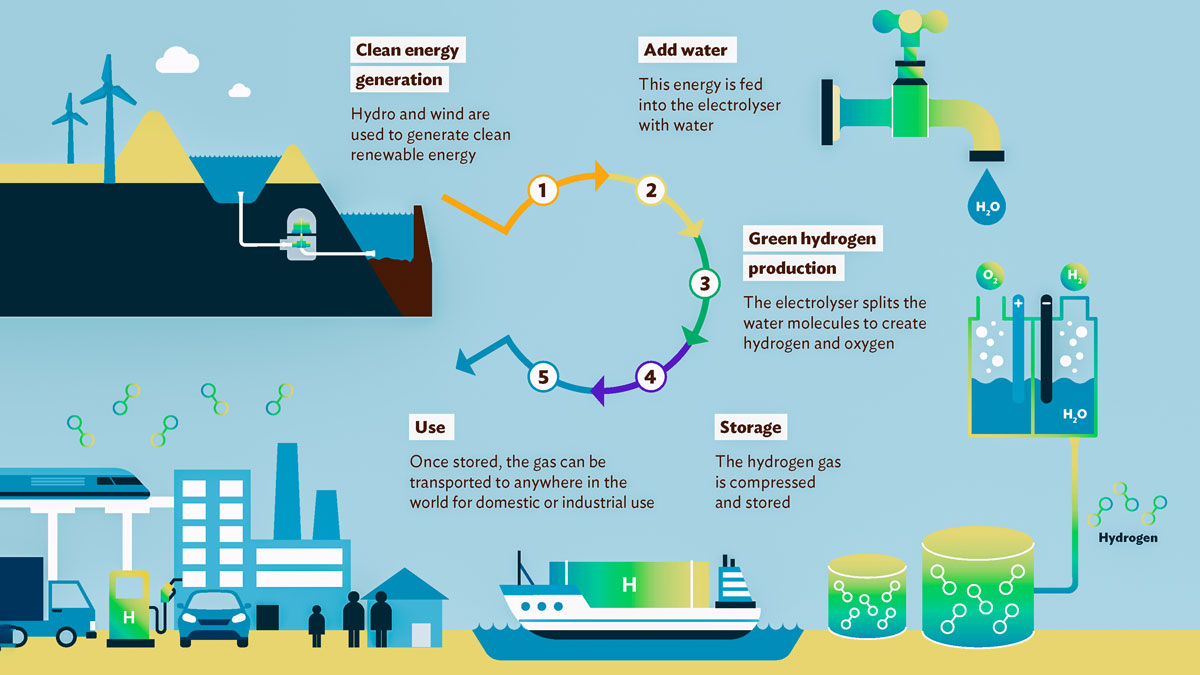Why the promise of green hydrogen-based energy transition is flawed?

Why the promise of green hydrogen-based energy transition is flawed?
Our Honorable Finance Minister, Smt. Nirmala Sitharaman, launched the Hydrogen Energy Mission in the Union Budget 2022, and the government later issued the Green Hydrogen Policy.
Major corporations and energy behemoths, as well as the Indian government, are now placing significant bets and investments on green hydrogen as the “next big factor” that would enable the country to switch to renewable energy, notably for its automotive sector.
For instance, French large conglomerate Total Energies has collaborated with India’s Adani Group’s Adani New Industries Ltd (ANIL) to spend $50 billion jointly on green hydrogen initiatives to develop a capacity of 1 million tonne per year green hydrogen generation by 2030. But this story also has another, “lesser-told,” aspect to it.

Why green hydrogen (and other forms) might not take us to better places!
The European Commission made the strategic choice to exclude “hydrogen mobility” from its renamed clean hydrogen alliance a few months earlier. The world has recently seen the triumph of traditional Li-ion batteries across all segments of electric cars, so the news was not particularly shocking.
However, it does make one wonder if the importance of hydrogen in achieving carbon neutrality by 2050 is overstated. That might be a yes or a perhaps yes answer. But why is it the case in both cases? Let’s attempt to find out in the following few paragraphs.
In order to create hydrogen and oxygen gases, we must divide a stable water molecule in an electrolyte, a process that consumes a lot of energy.
Only by melting the generated hydrogen gas below-250°C or by maintaining high pressure conditions can it be kept in storage. The “well-to-wheel efficiency” (energy recovered vs. energy provided) is less than 30% as a result of process inefficiencies. In contrast, a battery can recover around 99 percent of the energy that is given or stored during charging.
Furthermore, transporting hydrogen is frequently dangerous since hydrogen molecules have a tendency to migrate through steel tank structures, making them fragile and possibly dangerous.
The financial component is a further consideration, particularly for a price-sensitive market like India. One must keep in mind that manufacturing green hydrogen at scale entails somewhat greater expenses.
Additionally, lithium-ion batteries perform better overall than hydrogen fuel cells in electric cars and can keep constant performance until they need to be recharged.
Since it would require a significant upfront investment, it may take several years for hydrogen to overtake other energy sources in popularity. Additionally, until green hydrogen production reaches a certain level and its prices begin to significantly decline in order to compete with blue hydrogen, which is produced by reforming natural gas and steam while sequestering the CO2 produced in the process, it will continue to be the primary source of hydrogen fuel.
Researchers from Cornell and Stanford universities reported in one of their investigations last year that using blue hydrogen as fuel results in 20 percent greater greenhouse gas emissions than just burning natural gas for heat. Since then, it has posed a challenge to several countries’ strategies, forcing them to reevaluate their position on clean hydrogen in order to meet the goals of the Paris Agreement.
In a recent paper, Agora Energiewende introduced the idea of “no-regret hydrogen” to emphasize the concept of only adopting hydrogen as a last resort for decarbonization in any application. Undoubtedly, many businesses, including steel mills, ammonia manufacturing, and other refineries, need hydrogen to cut back on greenhouse gas emissions.
However, when better alternatives exist to accomplish the same goals, we should always choose those routes, just as we did when deciding between Li-ion batteries and hydrogen fuel cells for use in e-mobility.
Similar to this, businesses and refineries wanting to replace natural gas with hydrogen for heat generation can switch to electric arc furnaces for high-quality heat requirements (over 1000 °C) or heat pumps for comparatively lower quality heat (about 200 °C). The list of other applications where similar tactics might be used in place of selecting green hydrogen as the default decarbonization option is endless.
Let’s use it more effectively since we only have a certain amount of energy on this planet to meet our requirements. We must always keep in mind that wishing against the rules of nature may and will get us into a lot of difficulty.
Governments and private parties must collaborate to create a clean and sustainable future. Despite the present focus on green hydrogen, we must also take into account the many alternative possibilities that are now accessible and analyze each one in terms of its long-term sustainability and price.




